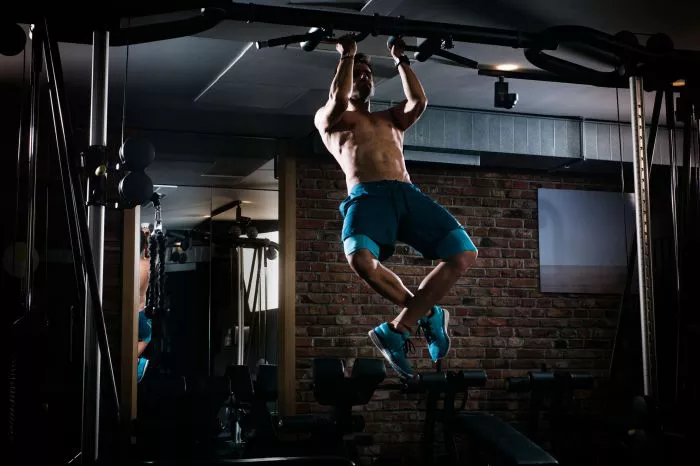Pull-ups are a powerful exercise that engages multiple muscle groups, particularly the upper body. However, when it comes to achieving a six-pack, the question arises: Can you get a six-pack from pull-ups alone? In this article, we’ll explore the role of pull-ups in core development, discuss additional exercises and dietary considerations, and provide a holistic approach to achieving a six-pack.
Understanding Core Muscles and Six-Pack Abs
Before diving into the specifics of pull-ups and their effect on the core, it’s crucial to understand what six-pack abs are and which muscles are involved. The term “six-pack” refers to the rectus abdominis muscle, a long, flat muscle extending vertically along the abdomen. This muscle is divided into segments by connective tissue, creating the appearance of six (or more) distinct sections when well-developed and visible.
Key Core Muscles:
Rectus Abdominis: The primary muscle responsible for the six-pack appearance.
Transverse Abdominis: A deep muscle that stabilizes the core and spine.
Obliques: Muscles on the sides of the abdomen, involved in twisting and side bending.
The Role of Pull-Ups in Core Development
Pull-ups are primarily known for targeting the upper body, specifically the back, shoulders, and arms. However, they also engage the core, including the rectus abdominis, to stabilize the body during the movement.
How Pull-Ups Engage the Core:
Stabilization: During pull-ups, the core muscles contract to stabilize the spine and prevent excessive swinging.
Isometric Contraction: The abdominal muscles work isometrically (without changing length) to maintain a steady position.
Indirect Activation: While pull-ups are not a direct abdominal exercise, they still recruit the core muscles, contributing to overall core strength.
Complementary Exercises for Six-Pack Abs
While pull-ups contribute to core engagement, achieving a six-pack requires a more targeted approach. Incorporating various exercises that directly target the abdominal muscles is essential.
Effective Abdominal Exercises:
Crunches: Focus on the upper abs by lifting the shoulders off the ground.
Leg Raises: Target the lower abs by lifting the legs while lying on your back.
Planks: Engage the entire core by holding a steady position.
Bicycle Crunches: Work the obliques through a twisting motion.
Hanging Leg Raises: Combine the core stability from pull-ups with direct lower ab engagement.
The Importance of Diet and Nutrition
Achieving visible six-pack abs is not solely about strengthening the core muscles; it also involves reducing body fat. Even with strong abdominal muscles, excess body fat can obscure them. Therefore, a balanced diet and proper nutrition are crucial.
Key Nutritional Considerations:
Caloric Deficit: Consume fewer calories than you burn to promote fat loss.
Protein Intake: Support muscle growth and recovery with adequate protein.
Healthy Fats and Carbohydrates: Include healthy fats and complex carbohydrates for sustained energy.
Hydration: Drink plenty of water to support overall health and metabolism.
Cardio and Fat Loss
In addition to strength training and diet, cardiovascular exercise plays a vital role in fat loss. Cardio helps burn calories, contributing to the caloric deficit needed for fat loss.
Types of Cardio:
Steady-State Cardio: Activities like jogging or cycling at a steady pace.
High-Intensity Interval Training (HIIT): Short bursts of intense exercise followed by rest or low-intensity exercise.
Consistency and Recovery
Consistency in training and nutrition is key to achieving a six-pack. However, it’s also essential to allow time for recovery. Muscles need time to repair and grow, and overtraining can lead to injuries.
Recovery Tips:
Rest Days: Incorporate rest days into your workout routine.
Sleep: Aim for 7-9 hours of sleep per night to support recovery.
Stretching and Mobility: Include stretching and mobility exercises to maintain flexibility and prevent injury.
See Also: How Do You Get Shredded Abs
Sample Workout Plan
To help you achieve a six-pack, here’s a sample workout plan that combines pull-ups, core exercises, and cardio.
Day 1: Upper Body and Core
Pull-Ups: 3 sets of 8-12 reps
Hanging Leg Raises: 3 sets of 10-15 reps
Push-Ups: 3 sets of 15-20 reps
Planks: 3 sets of 30-60 seconds
Day 2: Cardio and Abs
HIIT Cardio: 20 minutes
Crunches: 3 sets of 20-25 reps
Bicycle Crunches: 3 sets of 15-20 reps
Mountain Climbers: 3 sets of 30-45 seconds
Day 3: Lower Body and Core
Squats: 3 sets of 10-15 reps
Deadlifts: 3 sets of 8-12 reps
Leg Raises: 3 sets of 10-15 reps
Russian Twists: 3 sets of 15-20 reps per side
Day 4: Rest and Recovery
Common Mistakes and How to Avoid Them
When pursuing a six-pack, it’s common to encounter pitfalls that can hinder progress. Avoiding these mistakes can make your journey more efficient and effective.
Common Mistakes:
Neglecting Nutrition: Not maintaining a proper diet can prevent fat loss, making it harder to see abdominal muscles.
Overtraining: Excessive training without adequate rest can lead to burnout and injuries.
Inconsistent Workouts: Lack of consistency can slow progress.
Focusing Only on Abs: Neglecting other muscle groups can lead to imbalances.
Conclusion
While pull-ups are a fantastic exercise that engages the core, they alone are insufficient for achieving a six-pack. A comprehensive approach, including targeted abdominal exercises, proper nutrition, cardiovascular exercise, and consistency, is essential for developing visible abs. By incorporating these elements into your fitness routine, you can work towards a stronger core and a defined six-pack. Remember, achieving a six-pack takes time and dedication, so stay committed to your goals and enjoy the journey.


